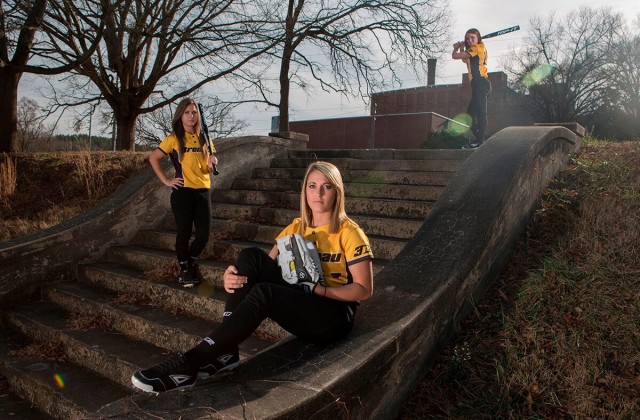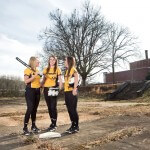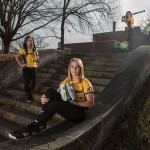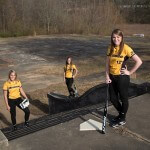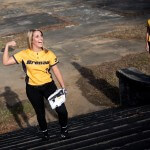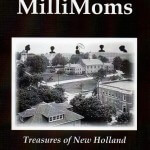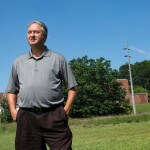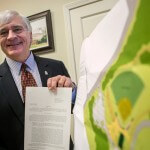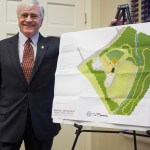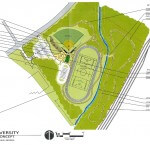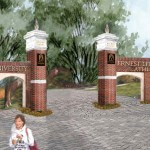Home Field Advantage
Donations from Pacolet Milliken and Ivester organizations put the ball in play for development of a $4.4 million, multi-use athletics park that preserves the community spirit of the historical New Holland mill village.
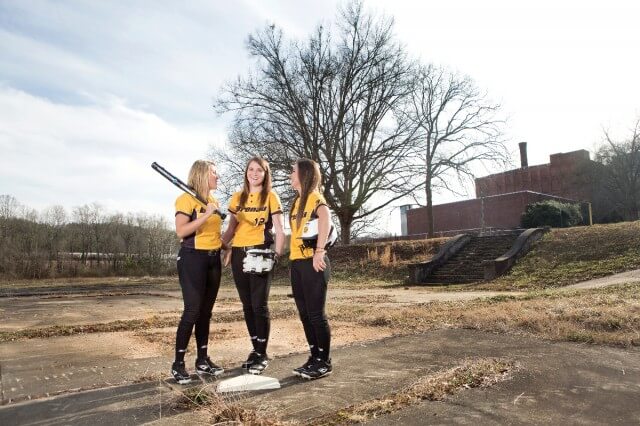 In 1903 it appeared as though Capt. John H. Montgomery’s dream of an idyllic North Georgia community in which all the residents could earn a living and raise families around good homes, schools, churches, neighborhood businesses, recreation opportunities and great people was literally gone with the wind. The devastating tornado caused significant damage to the five-story brick building that housed the cotton-processing textile mill, opened just a few years earlier as the largest in the state. However, a Yankee financier, Seth Milliken, rode to the rescue with enough money to get the idea back on its feet, and for the next six or seven decades the New Holland community emerged and remained the model of a self-sustaining mill village.
In 1903 it appeared as though Capt. John H. Montgomery’s dream of an idyllic North Georgia community in which all the residents could earn a living and raise families around good homes, schools, churches, neighborhood businesses, recreation opportunities and great people was literally gone with the wind. The devastating tornado caused significant damage to the five-story brick building that housed the cotton-processing textile mill, opened just a few years earlier as the largest in the state. However, a Yankee financier, Seth Milliken, rode to the rescue with enough money to get the idea back on its feet, and for the next six or seven decades the New Holland community emerged and remained the model of a self-sustaining mill village.
About two miles away, in the city of Gainesville, some more rebuilding was underway. The “girls’ school,” established in 1878 as Georgia Baptist Female Seminary, was under new management. It had a new name, Brenau College, and a new, more refined mission to provide broad, liberal arts education in a nurturing environment.
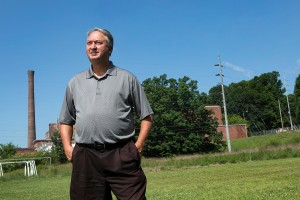
Now the community and institution are even closer together with the planned development of a $4.4 million athletics park that will serve both Brenau’s championship Golden Tigers intercollegiate sports programs as well as the community. South Carolina-based Pacolet Milliken Enterprises, Inc. donated a 16.8-acre tract of land adjacent to the Milliken & Company mill along Jesse Jewell Parkway (U.S. 129 and Georgia Highway 369) in the unincorporated Hall County community. Former Coca-Cola Chairman and CEO Doug Ivester, who is a Brenau trustee, and his wife Kay, both of whom grew up in the community, also provided a substantial cash donation that enables Brenau to launch the first phase of the development. The park will be named after Kay’s late father, Ernest Ledford Grindle.
Others from the community could not be more pleased, said former New Holland resident and community historian Vic Wilson, BA ’77. “I think it’s wonderful that my alma mater is doing this,” he said. “Tying this new development back to the community by naming it for a resident there is a terrific idea.”
“The New Holland community has been an important part of our history,” said Richard Webel, president of Pacolet Milliken. “We are pleased to support Brenau’s vision of how this land can be put to use for the university and the community as a whole.”
The now-underway project with a scheduled first-stage completion date in 2015 includes development of “home field” facilities for the Brenau Golden Tigers intercollegiate soccer, softball and track and field programs. However, the site plan also incorporates walking and jogging paths for public use and special programs like “movies on the green” and other entertainment and family recreational opportunities for those in New Holland, Gainesville and the surrounding region. Initial development on the site includes a softball field, parking, bleachers and other improvements. On March 28 trustees approved a proposal to include funding in a facilities improvement bond issue for construction of the field house, to be located near the softball field, so that could be included in that first stage, too. Additional facilities at the park will be built as additional funds are raised in the campaign.
That is an appropriate use for the property, says Vic Wilson, because it has virtually always been home to a ballpark, at least for most of a century.
“The New Holland Ball Park, officially named ‘Montgomery Park,’ was built with stadium steps and an overhanging awning that served as a minor league baseball field,” Wilson explained with his historian’s thoroughness. “It would later serve as a playground for the New Holland Elementary School. The old Industrial League baseball teams would fill the park with teams and spectators each spring and summer. It was a focal point of the community leading up to and after World War II. Notables such as Johnny ‘the Big Cat’ Mize, and Whack Hyder. There is even a feint rumor that ‘Shoeless Joe’ Jackson played there. But New Holland had its own Hall of Fame athletes: Ralph Chapman (still living), Fuzzy Wood, Pete Morgan, the Riley brothers (Nolan and Gene), Jake Miller, Charles Lay and countless others.
“The elementary school sat at the top of the ramp leading away from left field. It was a common thing for ball players to break a few windows after a thundering blast from 350 feet away and Principals Rhett Turnipseed and Ada Belle Gould became accustomed to replacing those windows on Monday morning. Many times the player who broke the windows would do the replacing.
“The ball park hosted the May Festival each year. While New Holland provided their own band for entertainment they would also have flower contests, beauty pageants, and a robust selection of fun things to do each May. New Holland ball park always bustled with excitement. The people made it happen with complete support of the mill and its workers.”
- Brenau softball players, from left, Cheyenne Marsh, Jenny Shepherd and Mackenzie Oliver stand on the future site of the Brenau University Athletic Complex next to the Milliken plant in Gainesville, Ga.
- Brenau softball players, from left, Mackenzie Oliver, Cheyenne Marsh and Jenny Shepherd stand on the future site of the Brenau University Athletic Complex next to the Milliken plant in Gainesville, Ga.
- Brenau softball players, from left, Cheyenne Marsh, Mackenzie Oliver and Jenny Shepherd stand on the future site of the Brenau University Athletic Complex next to the Milliken plant in Gainesville, Ga.
- Brenau University softball player Cheyenne Marsh shows some muscle during a photo shoot on the future site of the Brenau University Athletic Complex next to the Milliken plant in Gainesville, Ga.
- Milimoms by Brenau alumnus Vic Wilson.
- Vic Wilson, Brenau alumnus and author of Millikids and Millimoms, at the Pacolet Milliken plant in New Holland, Georgia. Wilson’s books are histories of the New Holland mill town where he grew up and which is the future site of Brenau University’s new athletic complex.
- Brenau alumnus Vic Wilson at the site of the university’s new Ernest Ledford Grindle Athletics Park near the ball fields and school yard at New Holland where he played as a MilliKid.
- Brenau University President Ed Schrader stands next to the site plan for the university’s new athletic complex along with the deed to the land donated by Pacolet Milliken Enterprises, Inc., on which the complex will stand.
- Brenau President Ed Schrader with the site plan for the new athletics complex, which he calls “a vital community asset in an area that has only begun to see significant commercial and residential redevelopment.”
- The site plan for the university’s new athletic complex.
- Part of the land donation includes the site once occupied by the elementary school where Doug and Kay Ivester met in third grade and the field for the textile mill’s baseball and softball teams. The development will be named “Ernest Ledford Grindle Athletics Park”honor of Kay Ivester’s late father.
